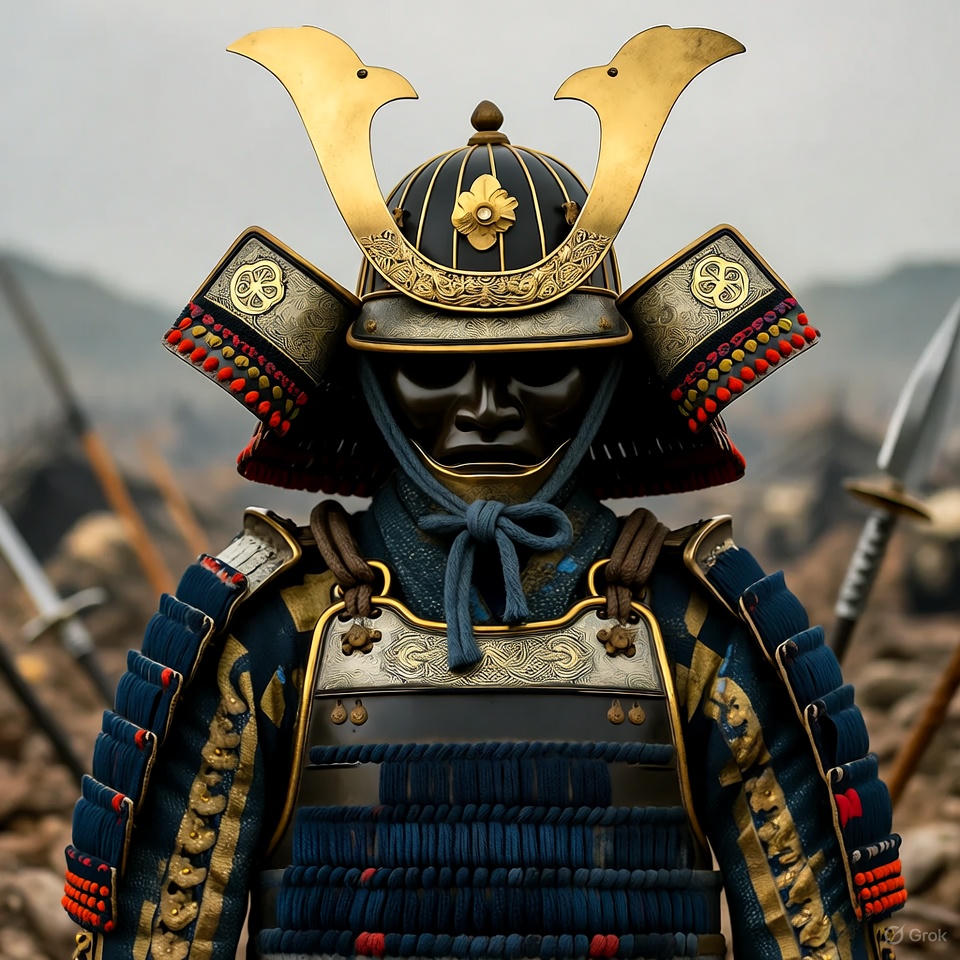On this crisp October 21, as the world spins forward into 2025, let’s rewind the clock over four centuries to a misty valley in Japan where the fate of a nation hung by the edge of a katana. Picture this: fog-shrouded hills, the thunder of hooves, and the sharp crack of matchlock guns echoing through the air. This isn’t the stuff of samurai movies—it’s the real deal, the Battle of Sekigahara, fought on October 21, 1600. Often called the “realm-dividing battle,” it wasn’t just a skirmish; it was the explosive finale to Japan’s brutal Sengoku period, a time of endless warlords duking it out for supremacy. Tokugawa Ieyasu, a cunning fox of a leader, faced off against a coalition led by Ishida Mitsunari, and the outcome? It birthed the Tokugawa shogunate, ushering in 250 years of peace, prosperity, and cultural flowering known as the Edo period. But why dig up this ancient clash today? Because buried in its blood-soaked soil are gems of wisdom that can transform your everyday struggles into triumphs. Buckle up—this is going to be a wild, fact-packed ride through history, with a motivational kick at the end to supercharge your life.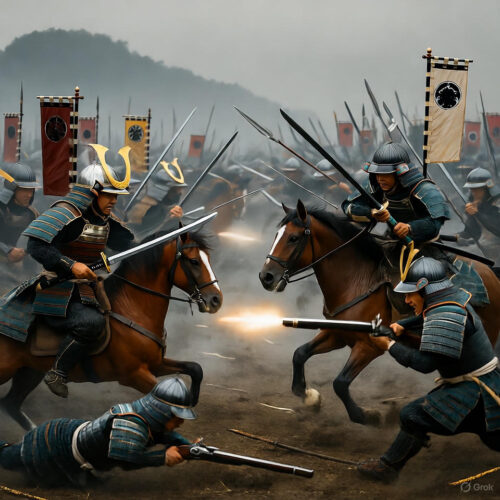
To truly grasp the epic scale of Sekigahara, we need to rewind even further, to the turbulent closing acts of the 16th century. Japan in the late 1500s was a patchwork of feuding domains, where daimyo (feudal lords) schemed, allied, and betrayed like characters in a high-stakes game of thrones. The Sengoku jidai, or “Warring States period,” had raged for over a century, leaving the land scarred by constant conflict. Enter Toyotomi Hideyoshi, the unifier who rose from peasant roots to conquer most of Japan by 1590. Hideyoshi wasn’t just a warrior; he was a master administrator, implementing land surveys, disarming peasants, and even launching ambitious invasions of Korea in 1592 and 1597—known as the Imjin War—to expand his empire. But ambition has its price. The Korean campaigns drained resources, bred resentment among his generals, and sowed seeds of division.
Hideyoshi died in 1598, leaving behind a five-year-old heir, Toyotomi Hideyori, and a council of five regents (the Go-Tairo) to govern until the boy came of age. Among them was Tokugawa Ieyasu, the patient strategist who controlled vast eastern lands from his base in Edo (modern-day Tokyo). Ieyasu had survived the chaos by playing the long game—switching allegiances when needed, building alliances, and amassing wealth. Opposing him was Ishida Mitsunari, a brilliant bureaucrat but poor military mind, who served as one of Hideyoshi’s key administrators. Mitsunari was loyal to the Toyotomi legacy but alienated many with his rigid, sometimes arrogant demeanor. Factional lines drew sharp: the “civilian” bureaucrats like Mitsunari versus the battle-hardened generals like Kato Kiyomasa and Fukushima Masanori, who resented Mitsunari’s influence.
Tensions boiled over after the death of Maeda Toshiie in 1599, another regent who had mediated between the factions. Without his buffer, accusations flew. Rumors of assassination plots against Ieyasu swirled in Kyoto, the imperial capital. Ieyasu, ever the opportunist, began consolidating power, marrying his family into key clans and rallying disgruntled generals to his side. Mitsunari, sensing the threat, formed a coalition—the Western Army—nominally to protect Hideyori’s interests. He convinced Mori Terumoto, a powerful daimyo with 1.2 million koku (a measure of rice yield, essentially wealth), to serve as nominal commander, though Terumoto stayed holed up in Osaka Castle. Other Western allies included Ukita Hideie, Konishi Yukinaga (a Christian daimyo fresh from Korea), and Shimazu Yoshihiro from distant Satsuma.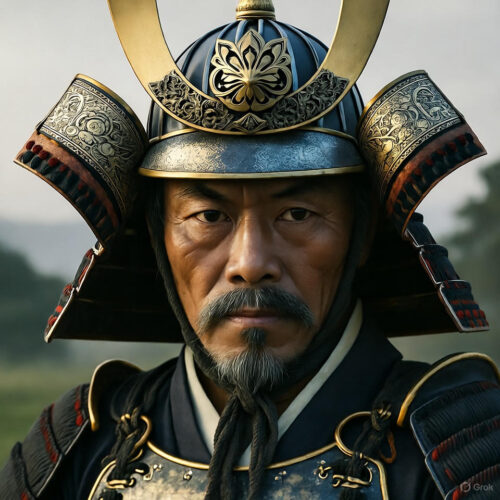
Meanwhile, Ieyasu’s Eastern Army grew formidable. He secured support from Date Masamune in the north, Maeda Toshinaga, and even neutral parties through diplomacy. A key flashpoint came with Uesugi Kagekatsu, a Western-leaning regent who defied Ieyasu by fortifying his domain. Ieyasu marched north to confront him, but this was a feint—Mitsunari seized the moment to rally his forces in the west. As Ieyasu turned back, preliminary battles erupted. The Eastern Army captured Gifu Castle on October 20 after a fierce fight where Ii Naomasa, Ieyasu’s “Red Devil” with his crimson-armored troops, played a starring role. Mitsunari’s plan to bottleneck the Easterners at chokepoints crumbled, forcing a decisive confrontation at Sekigahara, a narrow valley pass in Gifu Prefecture, surrounded by mountains like Mount Ibuki and Mount Sasao.
The stage was set for October 21, 1600. The Western Army arrived first, positioning about 81,000 troops in a defensive arc. Mitsunari anchored the center on Mount Sasao, with Ukita Hideie to his left facing the main road, Otani Yoshitsugu on the right flank at Mount Matsuo, and Shimazu Yoshihiro holding the rear. Kobayakawa Hideaki, a young daimyo with 15,000 men, perched on Mount Matsuo’s slopes—his loyalty questionable after grudges against Hideyoshi. Further back, Mori Hidemoto and Chosokabe Morichika waited with reinforcements, but Kikkawa Hiroie, a Mori vassal, had secretly pledged to defect, blocking their advance.
Ieyasu’s 88,000-strong Eastern Army approached from the east, deploying in a crane-wing formation for aggressive assaults. Fukushima Masanori led the vanguard, eager for glory, with Ii Naomasa and Honda Tadakatsu—two of Ieyasu’s “Four Heavenly Kings”—in support. Ieyasu himself commanded from a hilltop camp, directing with iron fans and messengers. The night before, heavy rain turned the field to mud, and dawn brought thick fog, adding an eerie veil to the proceedings.
As the fog lifted around 8 a.m. (though some sources say 10 a.m.), chaos erupted. Eastern scouts clashed with Western outposts, and Fukushima Masanori charged without orders, slamming into Ukita’s lines. The battle devolved into brutal melee: ashigaru foot soldiers with yari spears and tanegashima matchlocks exchanged volleys, while samurai on horseback hacked with katanas and naginata polearms. Gunfire—over 20,000 shots by some estimates—filled the air with smoke, making visibility a nightmare. Ieyasu had stockpiled firearms, including 19 cannons from a Dutch ship, the Liefde, which pounded Western positions.

The front lines deadlocked. Fukushima’s men, disciplined from Korean wars, held against Ukita’s mercenaries, many ronin (masterless samurai) hired for the occasion. To the right, Ii Naomasa’s red-armored unit charged like a scarlet storm, earning their fearsome reputation. Otani Yoshitsugu, despite leprosy, commanded brilliantly, repelling attacks from Todo Takatora. But the turning point came around noon: Kobayakawa Hideaki’s betrayal. Per pre-battle deals (or spurred by Ieyasu’s alleged signal shots), his 15,000 troops switched sides, crashing down on Otani’s flank. Yoshitsugu, foreseeing this, had positioned defenses but was overwhelmed. Legend says he committed seppuku on the field, his head hidden to deny enemies the trophy.
The defection cascaded. Wakisaka Yasuharu, Ogawa Suketada, and others flipped, their banners turning against former allies. Kikkawa Hiroie stalled the Mori reinforcements by feigning a meal break, physically blocking the path with his troops. Shimazu Yoshihiro, caught in the rout, led a desperate charge through Eastern lines, losing his nephew Toyohisa but escaping with 200 men—pursued by Ii Naomasa, who took a bullet but pressed on. Mitsunari’s center collapsed; he fled into the hills, captured days later.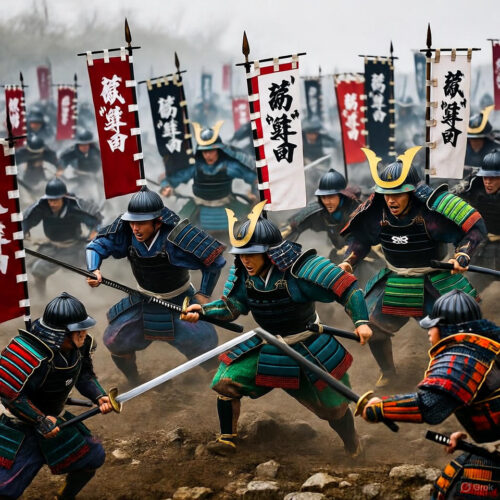
By 2 p.m., it was over. Western casualties topped 30,000, Eastern around 8,000. Heads piled high—samurai tradition demanded proof of kills, with Kani Saizo claiming 17 alone. Ieyasu’s victory was total, but mercy varied: defectors like Kobayakawa got rewards, while Mitsunari, Konishi, and Ankokuji Ekei were beheaded in Kyoto on November 6.
In the aftermath, Ieyasu redistributed lands like a chess master. He confiscated 6.8 million koku from losers, enriching allies: Ikeda Terumasa gained 520,000 koku, Yamauchi Kazutoyo took Tosa Province from the Chosokabe. The Mori clan, despite neutrality, lost two-thirds of their domain for hesitation. Sawayama Castle, Mitsunari’s home, fell quickly; its stones reused for Hikone Castle. Ieyasu quashed uprisings, like in Tosa where Ii Naomasa killed 273 rebels in weeks. Shimazu survived through diplomacy, the only Western clan unscathed.
Three years later, in 1603, Emperor Go-Yozei named Ieyasu shogun, founding the Tokugawa bakufu in Edo. This shifted power from Kyoto to Edo, centralizing control. The Edo period (1603-1868) brought peace: no major wars, economic boom via rice taxes, urban growth (Edo hit 1 million people), and cultural renaissance—kabuki theater, ukiyo-e prints, haiku poetry. Samurai became bureaucrats, merchants rose, isolationist sakoku policies kept foreigners out until Perry’s 1853 arrival. Sekigahara ended the warring era, enabling stability that shaped modern Japan.
But Sekigahara’s echoes go beyond dates and domains. Chroniclers like Ota Gyuichi described the horror: friends turning foes, arrows raining like hail. Artifacts survive—armors, swords, even the Dutch cannons. The site, now a national monument, marks positions: Otani’s grave, Ieyasu’s camp. Pop culture immortalizes it: films like “Sekigahara” (2017), games like “Nioh,” manga like “Vagabond” featuring Miyamoto Musashi, who fought (and lost) on the Western side as a teen.
Diving deeper, consider the weaponry: tanegashima guns, introduced by Portuguese in 1543, revolutionized warfare—Sekigahara saw mass volleys, foreshadowing modern tactics. Armor evolved too: tosei-gusoku suits balanced protection and mobility, with kabuto helmets sporting crests like Mitsunari’s horned design. Strategies blended Sun Tzu-esque deception with bushido honor, though betrayals showed pragmatism trumped loyalty.
The battle’s prelude involved sieges: Hosokawa Yusai held Tanabe Castle against 15,000 Westerners, delaying reinforcements; Sanada Masayuki stalled Ieyasu’s son Hidetada at Ueda, keeping 38,000 Eastern troops away. These sideshows highlight the campaign’s breadth—Sekigahara was the climax, but victories at Gifu and Fushimi set the stage.
Socially, it entrenched class divides: samurai atop, followed by farmers, artisans, merchants (shi-no-ko-sho). Women, though not on the field, influenced: Ieyasu’s wife Tsukiyama was executed earlier for intrigue, shaping his caution. Christian daimyo like Konishi faced persecution post-battle, leading to bans.
Economically, the koku system formalized: daimyo rated by rice output, funding armies. Ieyasu’s mines produced gold for coins, fueling trade. Culturally, peace allowed Zen Buddhism, tea ceremonies, and Noh theater to flourish.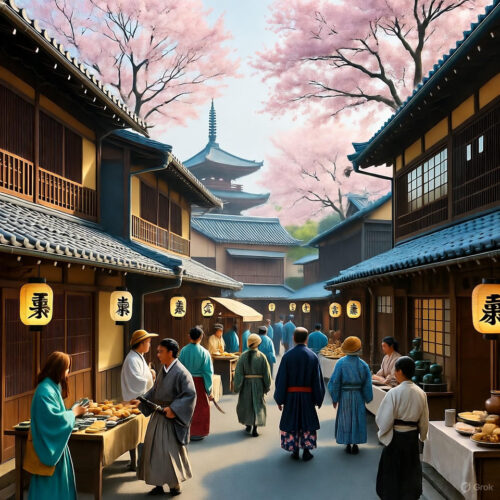
Sekigahara wasn’t inevitable—chance played a role: fog delayed starts, rain muddied fields, defections hinged on grudges. Ieyasu’s preparation shone: he bought guns wholesale, scouted terrain, and negotiated secretly. Mitsunari’s flaws—poor people skills, overreliance on numbers—doomed him. The battle’s scale dwarfs others: nearly 170,000 troops, rivaling European clashes like Agincourt.
Fast-forwarding, the shogunate’s fall in 1868 echoed Sekigahara’s themes—imperial loyalists overthrew Tokugawa, restoring the emperor in the Meiji Restoration. Today, Sekigahara inspires strategy games, tourism (battle reenactments), and even business lessons in Japan.
Now, shifting gears to the motivational punch: the Battle of Sekigahara teaches that from division comes unity, from chaos opportunity. Ieyasu’s victory wasn’t luck; it was strategic patience, alliance-building, and adaptability. Apply this to your life, and you’ll forge your own “shogunate” of success.
Here’s how you benefit today:
– **Strategic Planning in Career Advancement**: Like Ieyasu scouting terrain, map your professional landscape. Identify allies (mentors, networks) and potential betrayals (toxic colleagues). This foresight can lead to promotions or pivots, turning job instability into upward mobility.
– **Building Resilient Relationships**: Sekigahara’s betrayals highlight trust’s fragility. Nurture bonds through consistent communication, avoiding Mitsunari’s alienation. In personal life, this means deeper friendships and family ties, reducing isolation and boosting emotional well-being.
– **Adaptability in Health and Wellness**: The battle’s fog mirrors life’s uncertainties. Adapt by creating flexible routines—mix cardio with yoga, like switching tactics mid-fight. This builds physical resilience, lowering stress and enhancing longevity.
– **Financial Unity from Fragmented Resources**: Ieyasu unified domains; unify your finances by consolidating debts, budgeting like koku allocations. This creates stability, allowing investments that grow wealth over time.
– **Personal Growth Through Decisiveness**: Hesitation cost the West; act boldly on goals, like Kobayakawa’s switch (minus the betrayal). This cultivates confidence, turning procrastination into achievement.
To implement, follow this plan:
- **Assess Your Battlefield (Week 1)**: Journal your current challenges—career, relationships, health. List “Eastern” strengths (skills, supporters) and “Western” weaknesses (obstacles, doubts).
- **Forge Alliances (Weeks 2-3)**: Reach out to three people weekly for advice or collaboration. Attend a networking event or join a group aligned with your goals.
- **Prepare Defenses (Weeks 4-6)**: Build habits—daily exercise, budgeting apps, learning a skill. Anticipate setbacks with contingency plans, like Ieyasu’s gun stockpiles.
- **Execute with Adaptability (Ongoing)**: Set weekly milestones, adjust as needed. Celebrate small wins to maintain momentum.
- **Reflect and Unify (Monthly)**: Review progress, integrate lessons. This creates lasting peace in your life, much like the Edo era’s stability.
Sekigahara reminds us: history isn’t dusty—it’s a blueprint for victory. Charge forward!

